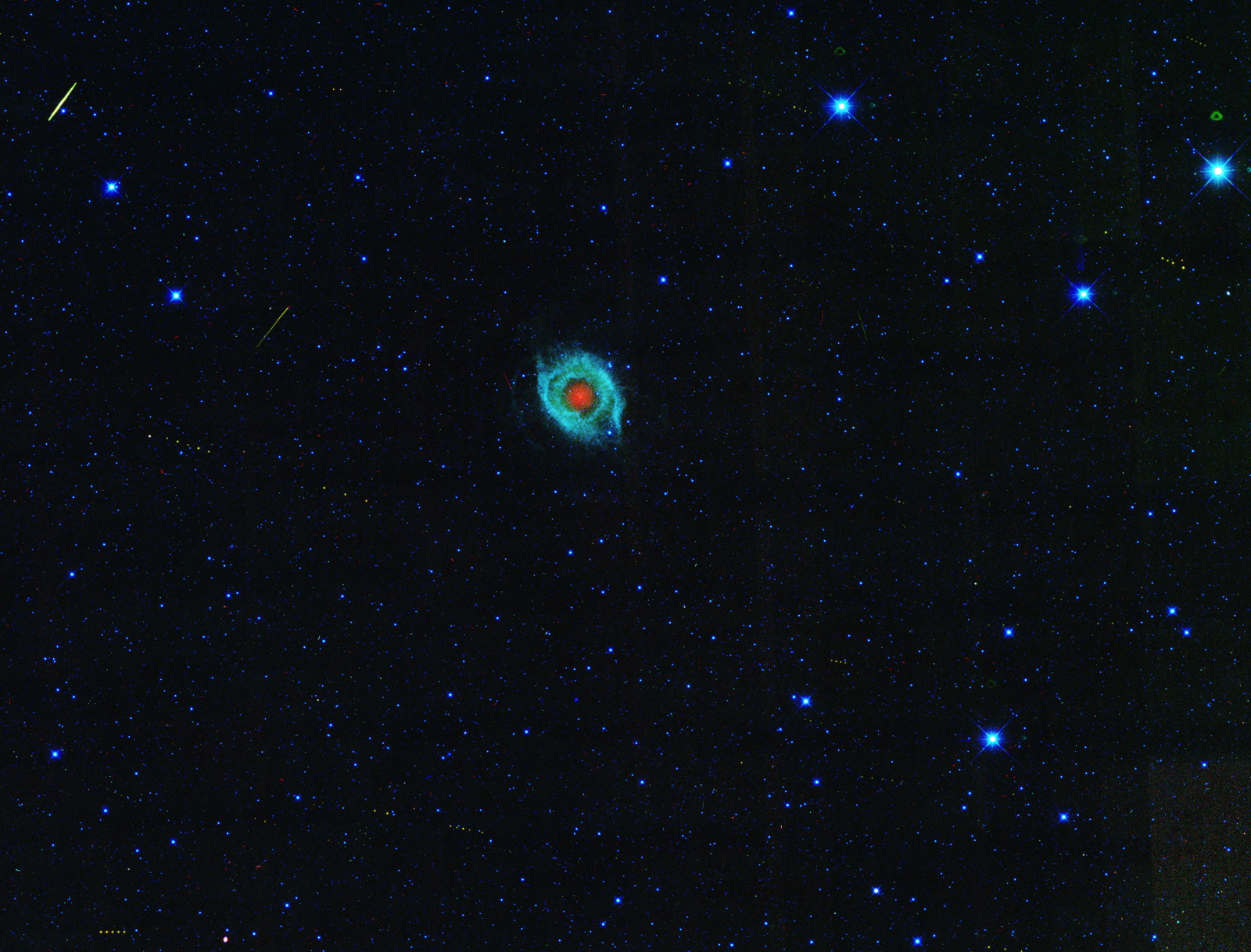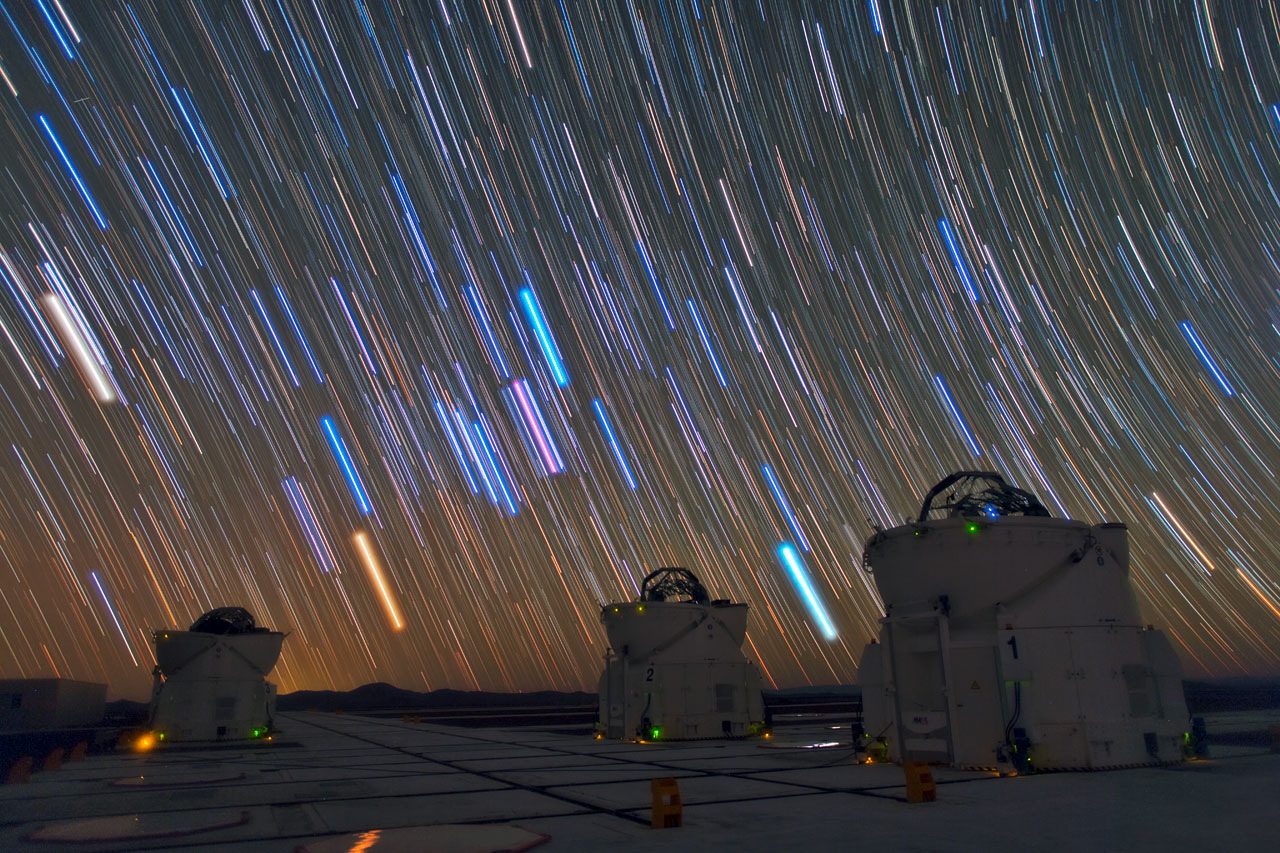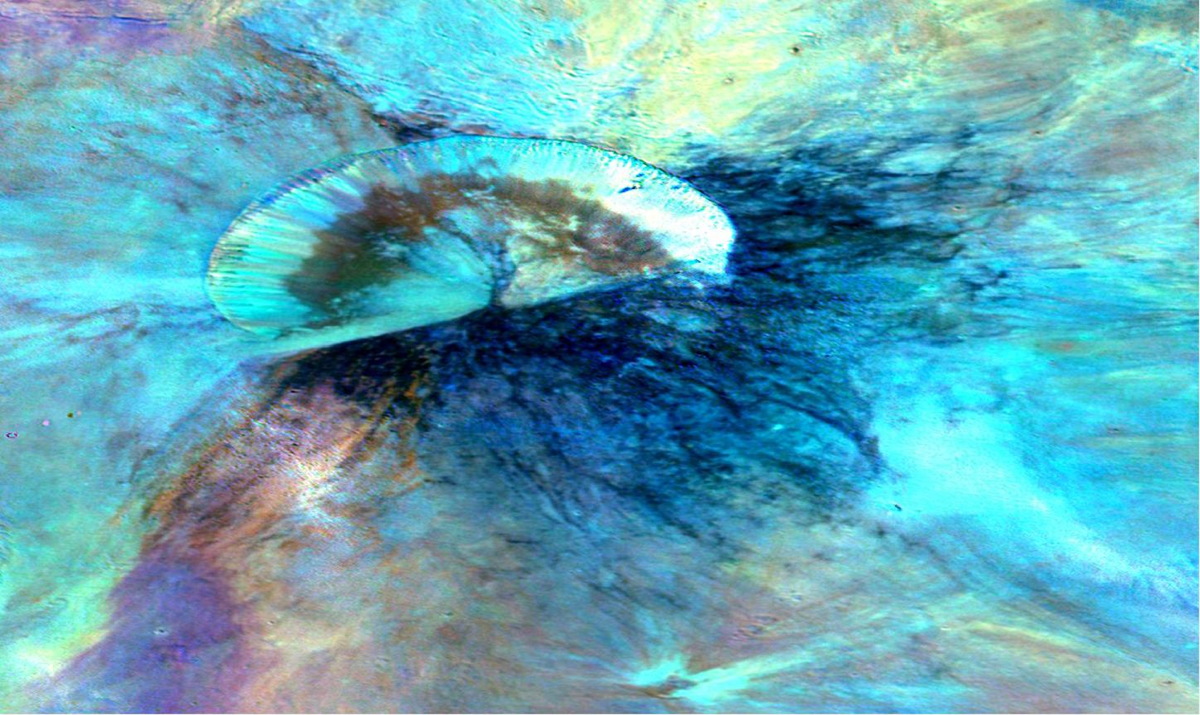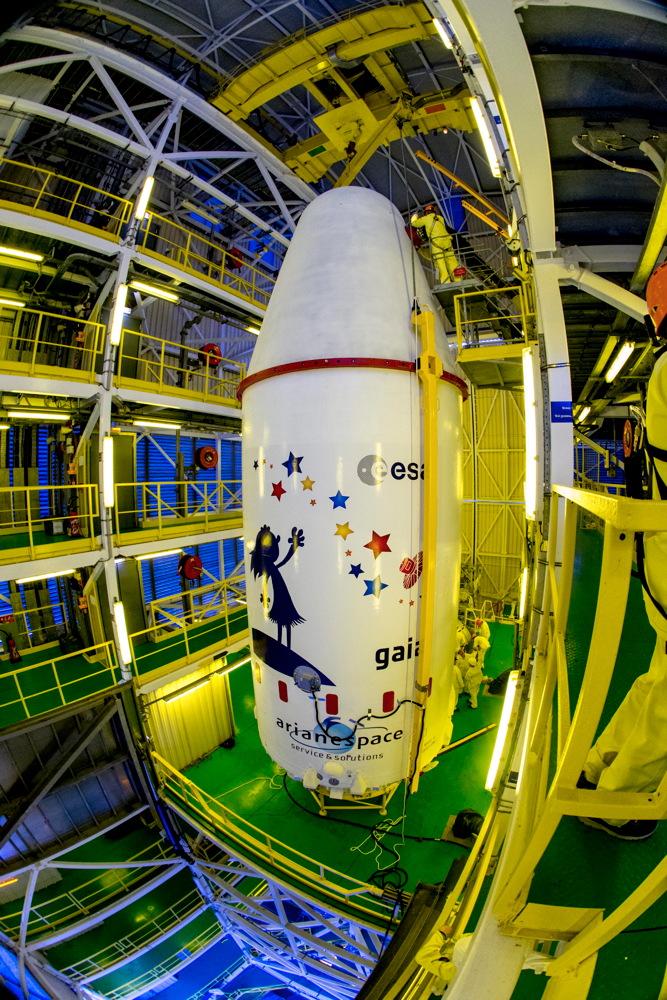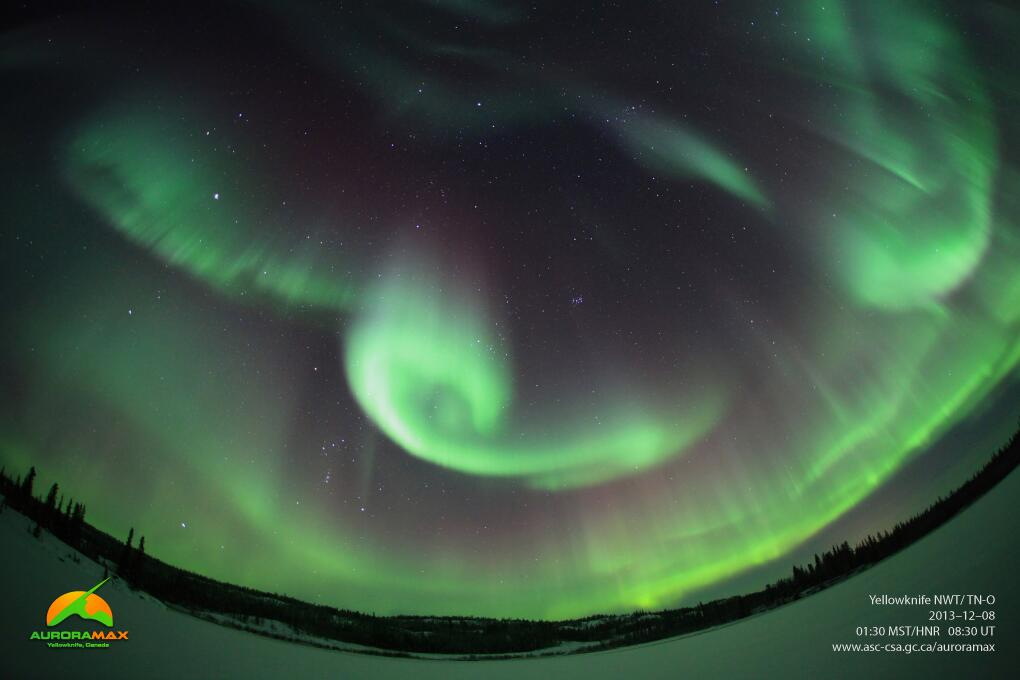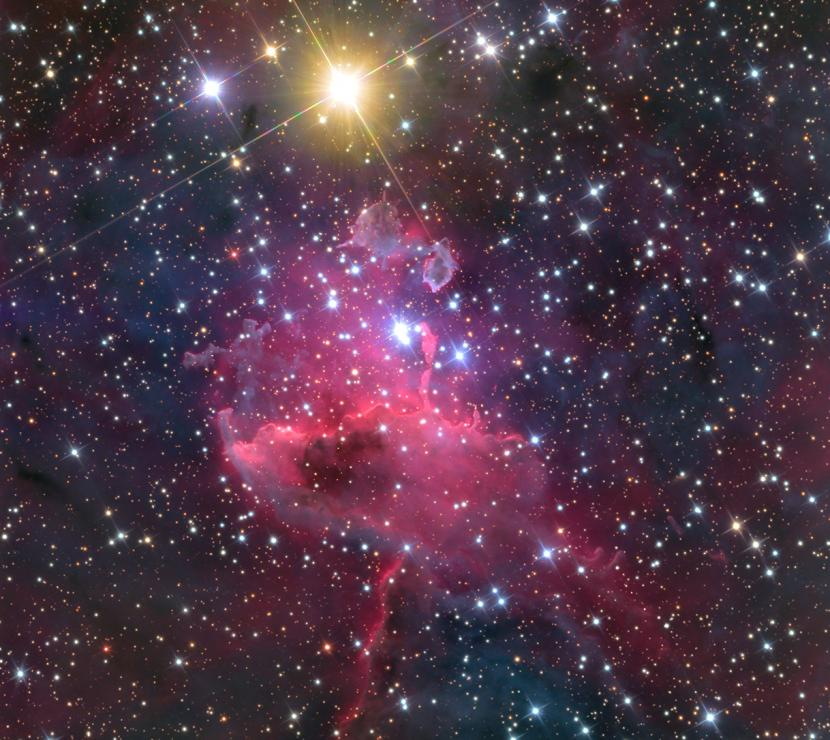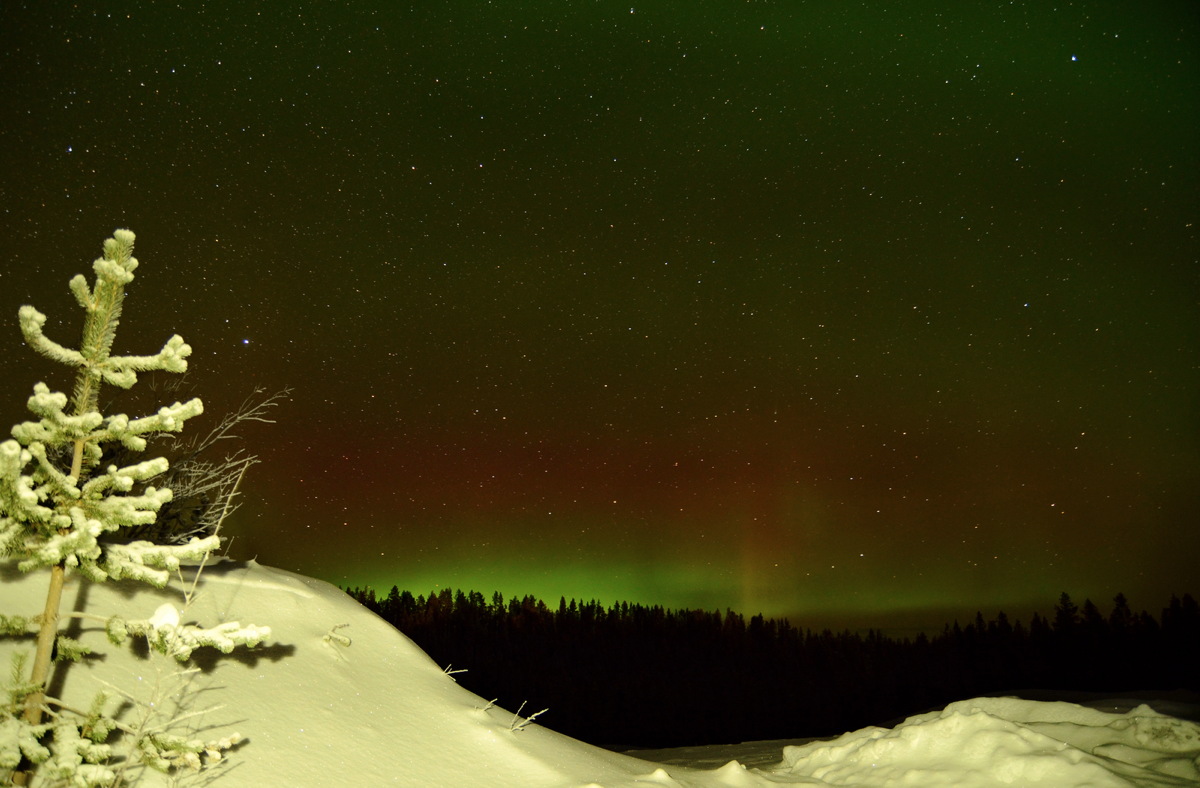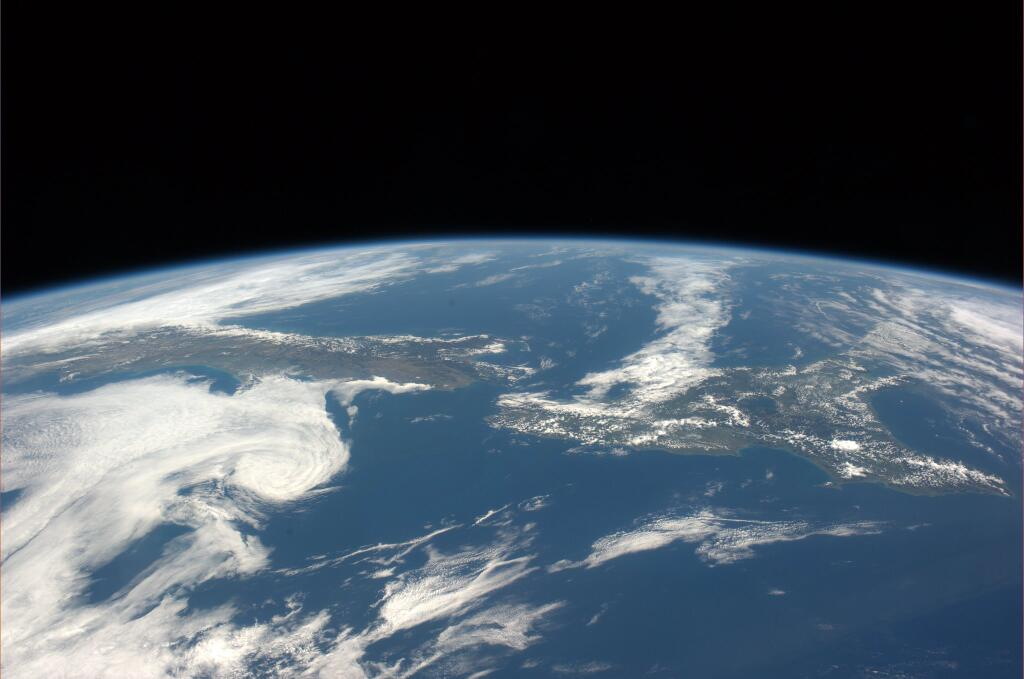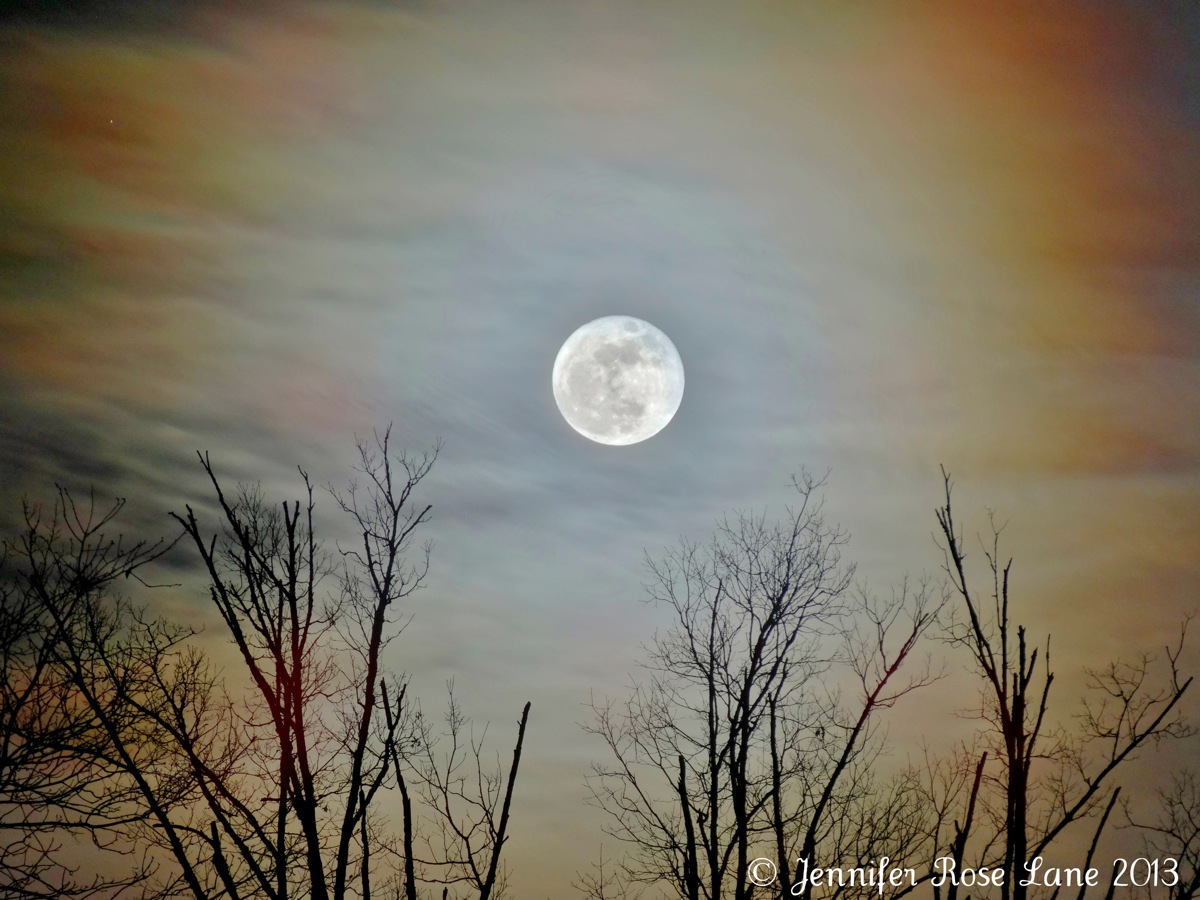Space Image of the Day Gallery (December 2013)
Along the Dotted Line
Monday, Dec. 16, 2013: Yellow-dotted tracks of asteroids appear to zip past the Helix nebula, a dying star, in this image obtained by NASA's Wide-field Infrared Survey Explorer (WISE). However, a vast gulf separates the celestial objects, as the nebula lies far outside our solar system, while the asteroid tracks remain firmly inside our solar system. The bluish-green and red materials in the nebula consist expelled remnants of what was once a star similar to our sun. The burnt-out core of the star, called a white dwarf, heats the expelled material, causing an infrared glow. Around the edges of the Helix nebula, tracks of asteroids show up as lines of yellow dots, the individual dots recorded in separate pictures combined in this image. Infrared data can help find the smaller, darker asteroids more difficult to see with visible light. Other streaks in the picture represent Earth-orbiting satellites and cosmic rays.
— Tom Chao
See the World Spinning 'Round
Tuesday, Dec. 17, 2013: Star trails shine above three of the four Auxiliary Telescopes (ATs) of the Very Large Telescope Interferometer (VLTI) at the Paranal Observatory in Chile. Each bright trail marks the apparent path of a single star across the dark night sky, as the Earth rotates beneath. This photographic technique enhances the natural colors of the stars, giving an indication of their temperature, ranging from about 1000 degrees Celsius for the reddest stars to a few tens of thousands of degrees Celsius for the hottest, appearing blue. The sky in this remote and high location in Chile remains extremely clear, and no light pollution obscures the view.
— Tom Chao
Kind of Blue
Wednesday, Dec. 18, 2013: Crater Antonia lies in the enormous Rheasilvia basin in the southern hemisphere of the giant asteroid Vesta, as seen in this colorized composite image from NASA's Dawn spacecraft. Antonia stretches 11 miles (17 kilometers) in diameter. The light blue color represents fine-grain material excavated from the lower crust. Coarser material buried the southern edge of the crater shortly after the crater formed. The dark blue of the southern crater rim occurs from shadowing of the blocky material. The composite image maximizes subtle differences in lithology (the physical characteristics of rock units, such as color, texture and composition), paying special attention to the iron-rich mineral pyroxene in the color scheme. Dawn's framing camera obtained the images from September to October 2011.
— Tom Chao
Keep Your Feet on the Ground and Keep Reaching for the Stars
Thursday, Dec. 19, 2013: The Soyuz VS06 upper composite containing Gaia space observatory moved to the launch pad and was installed inside the mobile gantry on December 14, 2013. The Soyuz VS06 rocket lifted off successfully on December 19, 2013, from Europe's Spaceport in French Guiana. The European Space Agency’s Gaia mission hopes to produce an unprecedented 3D map of our Milky Way galaxy by mapping the position and motion of a billion stars with extreme precision. The mission logo, seen here on the payload fairing, shows a young girl on Earth reaching for the stars of the Milky Way. A representation of Gaia spacecraft, in red, appears partially obscured at right.
— Tom Chao
Connect the Dots
Friday, Dec. 20, 2013: Galaxy cluster ISCS J1434.7+3519, the assembly of red dots near the center of this image, lies about 9 billion light-years from Earth. The cluster represents one of several very distant galaxy clusters discovered when ground-based optical data from the National Optical Astronomy Observatory's Kitt Peak National Observatory combined with infrared data from NASA's Spitzer Space Telescope. Stars in our galaxy appear as the large white and yellow dots in this picture, Distant galaxies make up the rest of the smaller dots. The cluster itself includes more than 100 massive galaxies, which Spitzer shows to form stars in prodigious fashion, some forming stars hundreds of times faster than our Milky Way galaxy. In this image, infrared light has been colored red; and visible light, blue and green.
— Tom Chao
Curl Up and Sky
Monday, Dec. 23, 2013: Canada's automated aurora camera tweeted this photo on Dec. 9, 2013. The tweet read: "AURORAMAX GALLERY • Latest #photo of #aurora borealis above #Yellowknife, NWT taken at 01:30 MST on December 8, 2013. pic.twitter.com/CbEbSXS80n" [For more photos of auroras, please see Northern Lights: Amazing Aurora Photos of 2013.]
— Tom Chao
Gaslight
Tuesday, Dec. 24, 2013: IC 417 is an emission nebula with an embedded young star cluster in the constellation of Auriga. Emission nebulae consist of clouds of ionized gas emitting light of various colors.
— Tom Chao
Breaking space news, the latest updates on rocket launches, skywatching events and more!
Aurora and the Photobombing Christmas Tree
Wednesday, Dec. 25, 2013: Astrophotographer Mia Stålnacke sent in a photo of an auroral display which features an arboreal feature she calls “the photobombing Christmas tree.” She took the photo next to Esrange Space Center, near Jukkasjärvi, just outside Kiruna, Sweden, on Dec. 7, 2013. She writes in an e-mail to SPACE.com: “It was around -30 C [-22 F]. The night after that temperatures reached -40 C [-40 F]. There was no aurora visible at first, but I decided to take some night sky images anyway. When I turned around, I saw the aurora flaring up behind me, and I was standing right next to this tree, so I figured, hey! Why not; it's almost Christmas. It was a beautiful night with twinkling stars and sparkling snow and the ghostly glow of the red and green aurora.”
— Tom Chao
Do You See Hobbiton?
Thursday, Dec. 26, 2013: On Dec. 14, 2013, Dr. Koichi Wakata tweeted this image of New Zealand taken aboard the ISS. He wrote: “New Zealand at a glance. Full of vivid green.pic.twitter.com/xJ3YZDgYw9” The North Island lies to the right in this photograph. New Zealand has famously come into the spotlight in recent years for serving as the backdrop for the movies based on books by J. R. R. Tolkien, “The Lord of the Rings” and “The Hobbit.” Wakata represents the Japan Aerospace Exploration Agency (JAXA) as a Flight Engineer on International Space Station (ISS) Expedition 38 and the Commander of Expedition 39.
— Tom Chao
Cold Hearted Orb That Rules the Night
Friday, Dec. 27, 2013: Astrophotographer Jennifer Rose Lane sent in a photo of December's "cold" full moon, taken in West Virginia, Dec. 17, 2013. The full moon of December is called the “Full Cold Moon,” among other names.
— Tom Chao
